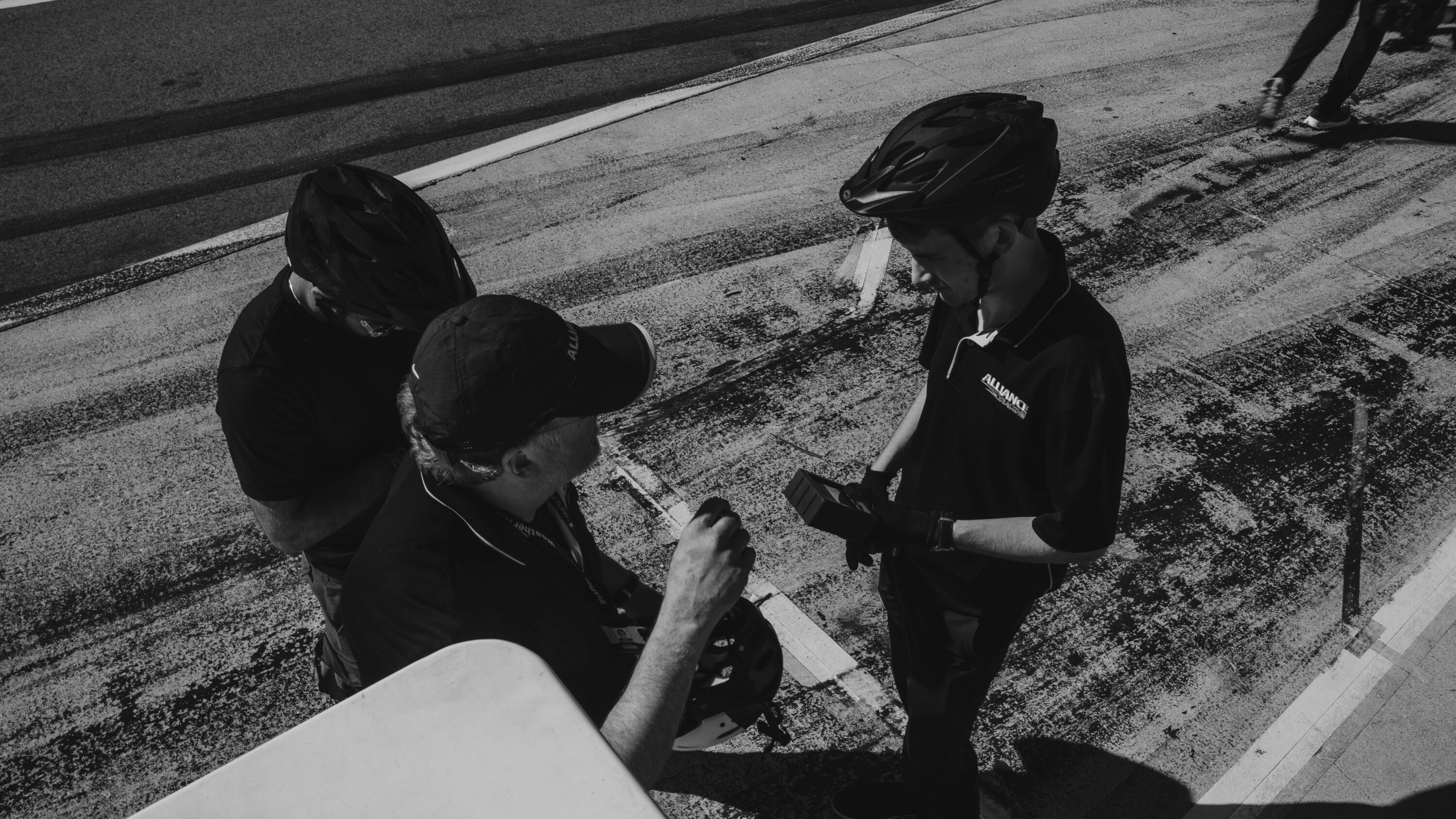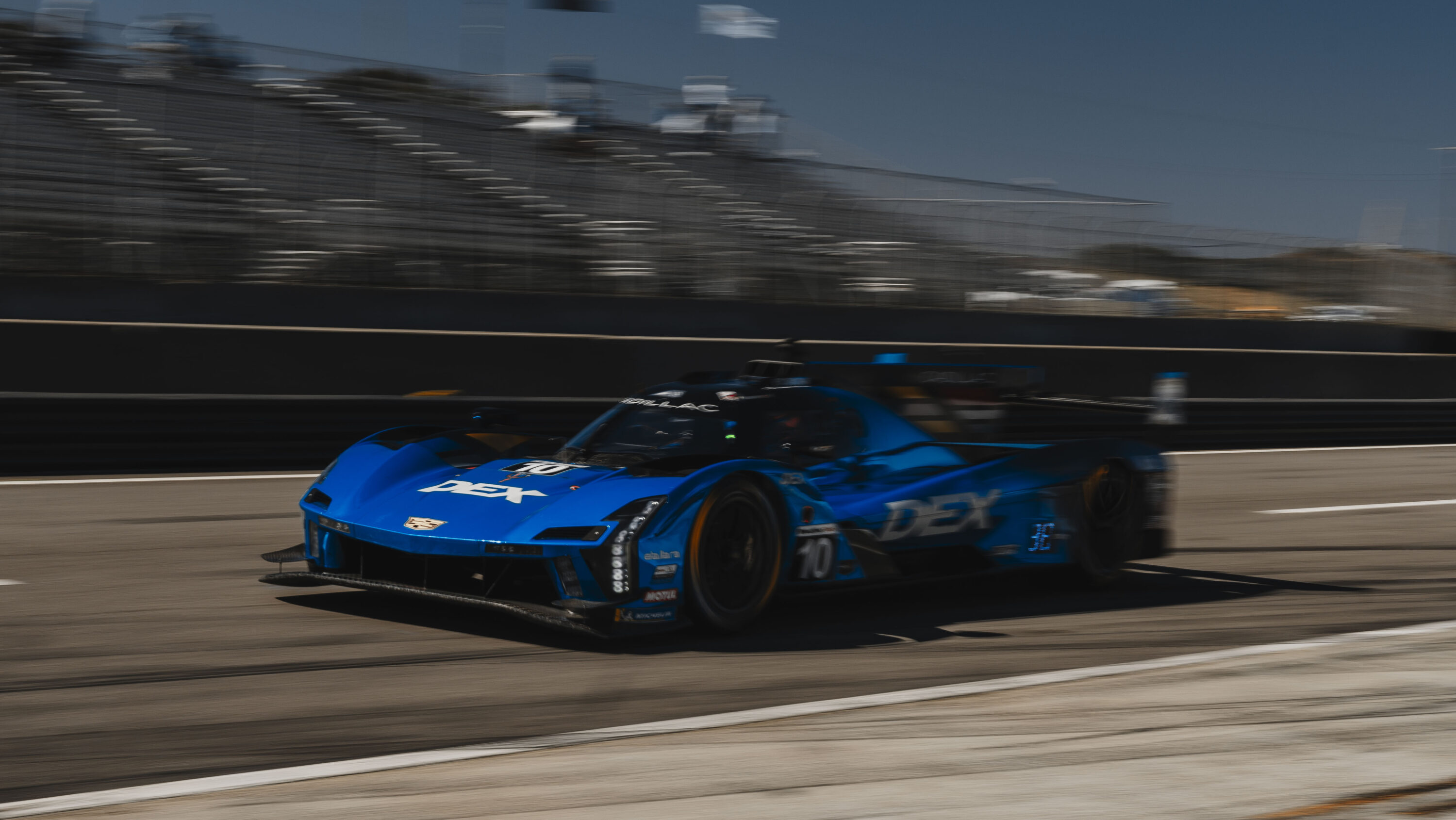Giving your opponent too many options can cause them to pause… giving you time to get away
Whether you’ve just gained a position and your competitor is still close behind, or you’ve just defended one attack that has left you vulnerable to another, the scenario is much the same:
The pass-attempt into the next corner is inevitable — so what can you do?
Taking the inside line, forcing your opponent to go the long way around, is an oft-used and effective tactic. Holding the outside so you get the better run out of the corner is another option.
Oftentimes, the responses to those tactics are to either go for the over-under, or to late-brake and take the apex. And your opponent is ready for both of those.
But have you ever considered driving straight down the middle? If you do, you might just catch your opponent by surprise.
Here’s How it Works
- Either immediately upon entering the straightaway, or as you close in on the braking zone: move to the middle of the track
- Be sure that you do this before your opponent makes any non-standard movement (off of the racing line): this preserves your “one move”
- Plot your line carefully and hope that your opponent pauses as you enter the braking zone: if they hesitate — they lose!
- If your opponent takes the inside line, keep them pinched on the apex and get the run from having a wider corner arc
- If your opponent takes the outside line, then apex normally and modulate your throttle-input to keep them from getting a “run” (this takes practice)
By taking a non-obvious line, you can easily stump your opponent for that half-second it takes. You’ll see it in the mirror — they’ll twitch one way, then the other, but neither twitch is with conviction. They’re stuck!
Furthermore, by preserving your “one move”, you can react to their initial line, which gives you all sorts of options.
Two Examples
Here is a clip taken from two difference races at UMC with NASA Utah in October of 2022. I find myself in a defensive position going down to Turn 5, Blackrock.
Though not executed perfectly, I was able to hold on to my position by placing my car mid-track, giving me options to move again (if desired) and ultimately resulting in coming out ahead.
Defending After Passing
In Example 1, I get a massive run due to my opponent’s slide out of Sunset Bend at UMC. I gain position at the apex of Dreamboat (T2). I know that this will compromise my run into Work Out and thus leave me vulnerable going into Black Rock Hairpin.
I gauge pace and see the gap behind me closing rapidly. So as we enter the braking zone for Black Rock, I move to the middle.
Jeff doesn’t hesitate and opts for the over-under attempt. Doesn’t work! I have the outside line and get the better run out of the hairpin, securing the lead as we head into Right-Hook/Knock-Out. Job done.
Defending Multiple Pass Attempts
In Example 2, John is on my tail and I chose not to close the door into Sunset Bend. John doesn’t quite go deeply enough to take the apex and we share that corner.
Having the outside line, I’m able to take the apex into Dreamboat and… doesn’t this position feel familiar?
John is closing earlier than Jeff was, so I move over to the center as we go into Scream and keep the car centered as we head down to Blackrock.
Watch my mirror — John twitches left, then right, and ultimately tries the over-under as well, getting much closer to making the pass than Jeff did, but… I have the dominant position into Right-Hook/Knock-Out and hold the position, getting a good run out of the corner and getting some space.
So the Secret’s Out — Now What?
I’ve given away my super-secret, never-been-seen-before trick, so now I can never use it again, right?
Wrong.
The thing about racing is… it’s like playing Speed Chess while jumping rope on a Bosu Ball. Being able to plan, anticipate, and execute moves while managing car balance and not over-focusing on the wrong thing is what makes this sport so fun and challenging.
Every move has a counter-move and every counter has a counter. You’re trying to read the “body language” of the car ahead/behind, put it in context with what you know about the car and driver, put THAT into context with where you are on track and conditions, and… not screw up.
Does this tactic always work? Absolutely not.
Is it effective? Many times, yes.
By adding moves to your mental toolbox, you’re increasing your capacity to improvise and react quickly on-track. Something will work for a while, but then your competition gets wise and you need to move on to the next thing. And so it goes.
Enjoy!






